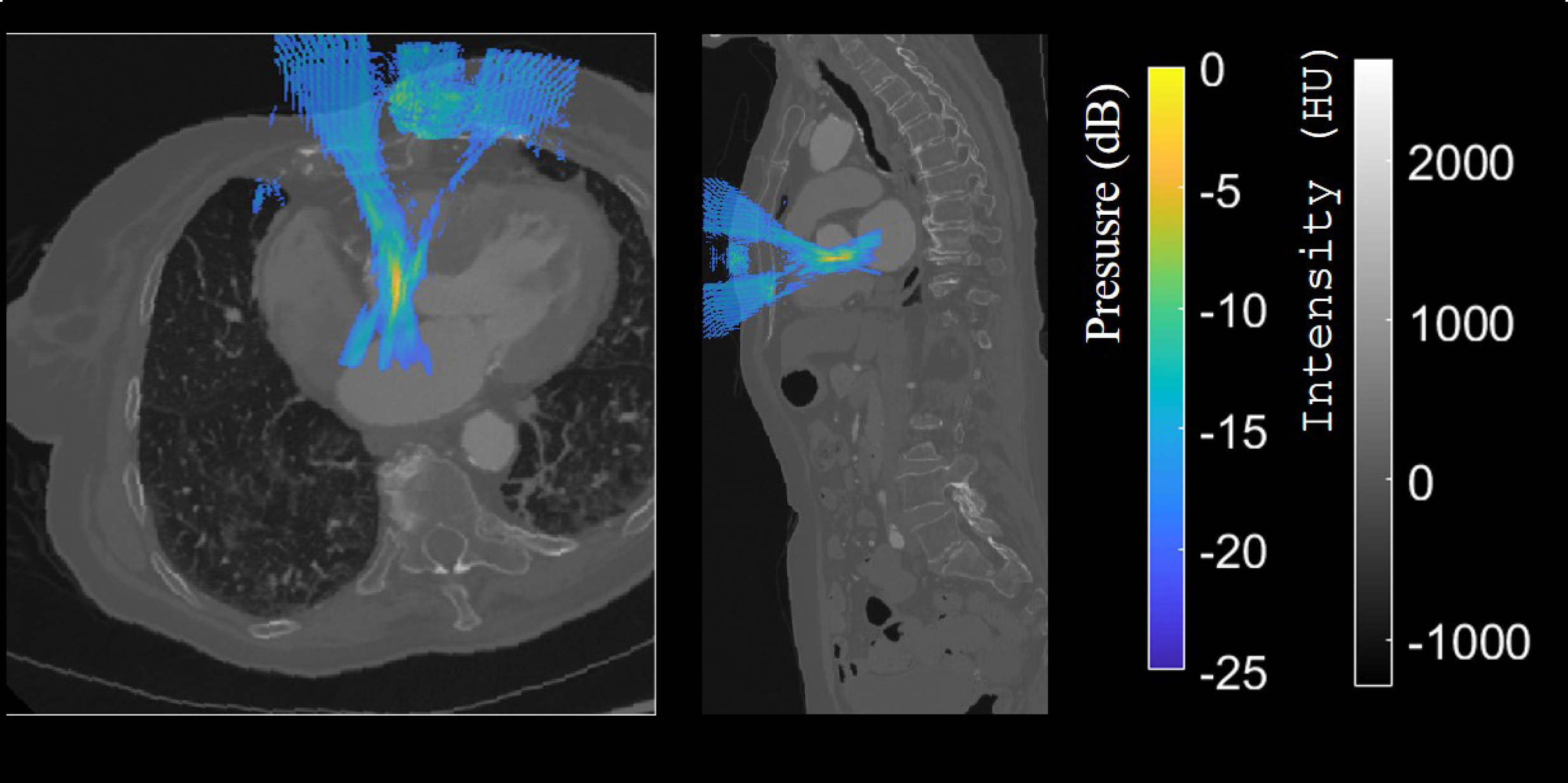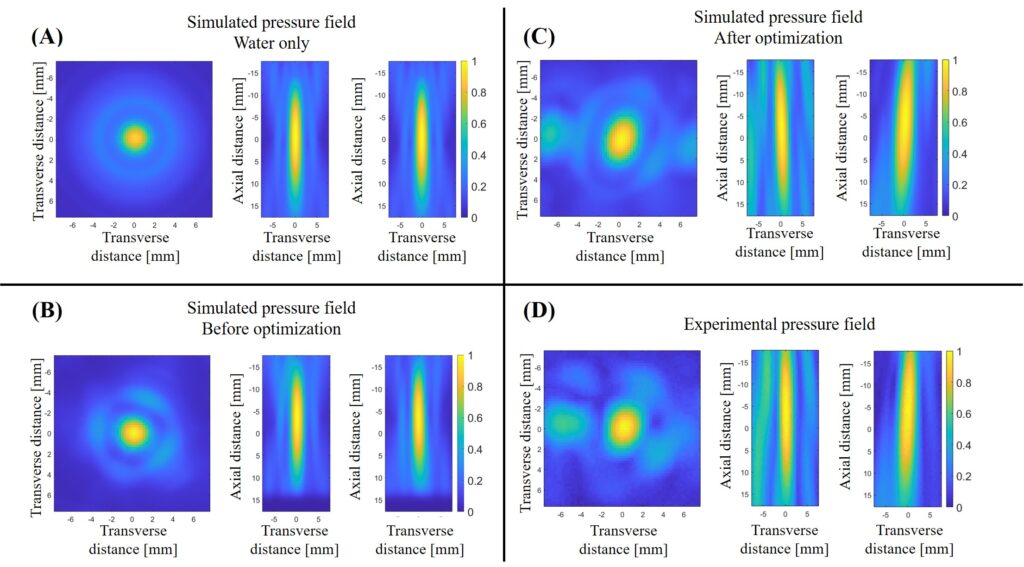
Numerical modeling for cardiac ultrasound therapy: new paper in IEEE Transactions on Biomedical Engineering
A new study in collaboration between Cardiawave and researchers from Physics for Medicine Paris presents a 3D numerical model of ultrasonic propagation through the ribcage, designed for applications in non-invasive cardiac ultrasound therapy.
The study describes the development and experimental validation of a model capable of simulating ultrasound focusing through heterogeneous thoracic tissues. Both linear and nonlinear k-space simulations were performed using the k-Wave MATLAB toolbox. The model was validated using in vitro human ribs and porcine flail chest samples, showing excellent agreement between simulated and measured pressure fields (mean correlation coefficient R² = 0.89 ± 0.07 for linear propagation and R² = 0.91 ± 0.06 for nonlinear propagation).
The feasibility of applying this model to human data was then demonstrated on nine patients treated non-invasively for calcified aortic stenosis in the Valvosoft® Pivotal Study (ClinicalTrials.gov: NCT05235568), led by Cardiawave, in collaboration with the Hôpital Européen Georges Pompidou (AP-HP).
A correlation (R² = 0.64) was found between the attenuation estimated by simulation and the emission amplitude required to reach the cavitation threshold during therapy.
These results suggest that the proposed numerical model can accurately reproduce ultrasonic propagation through the human thorax and, with further development, could serve as a treatment planning tool for non-invasive ultrasonic cardiac therapy, supporting Cardiawave’s pioneering clinical applications.
👉 Read the full paper: doi.org/10.1109/TBME.2025.3618103

Results of the experimental validation of the ultrasound wave propagation model through the ribs





